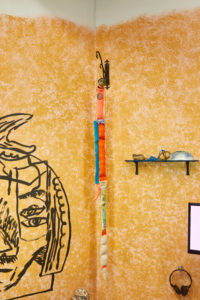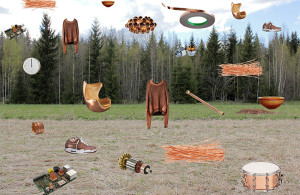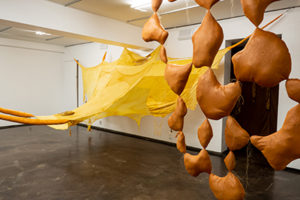A Bad Sign is a rectangular LED screen in the window of Turku’s Titanik gallery. It has a single line of red writing scrolling from right to left, meeting the reader’s eyes going from left to right. The text is a fragmentary narrative consisting of a pilot and eleven consecutive episodes of poetic text by artist Jessie Bullivant. The piece was commissioned for Weathering, a durational exhibition project about time and weather as agents in making meaning, organised by Katie Lenanton and Bogna Wisniewska, and unfolding through different activities and locations between 2019 and 2022. The screen was turned on between the gallery’s exhibitions throughout the year 2021.
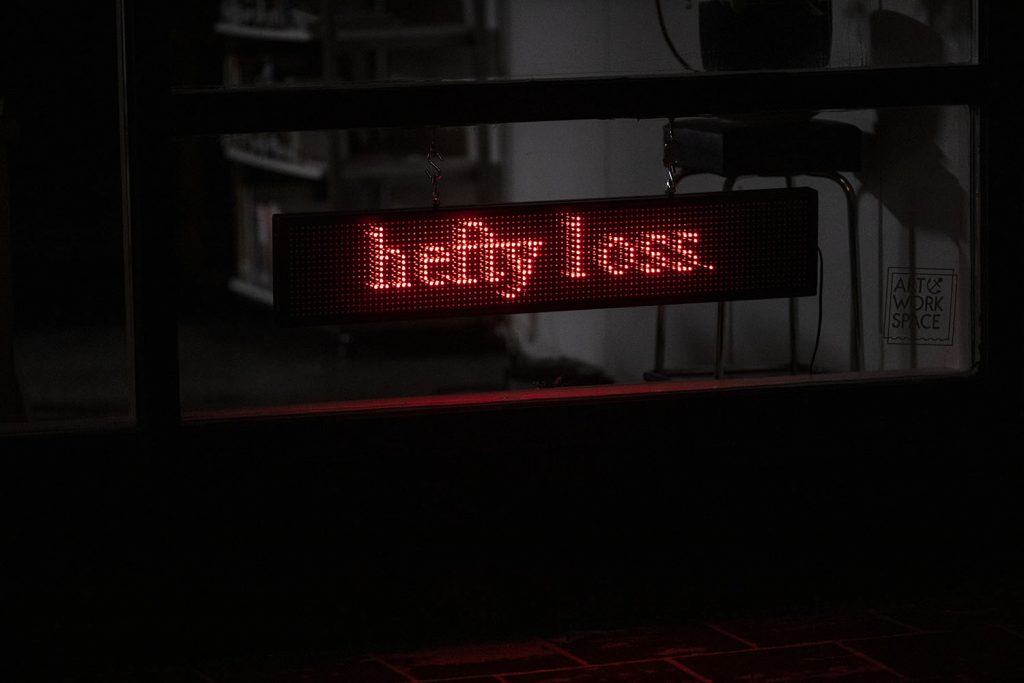
The piece’s text makes folds in time, touching on three temporal planes and drawing them together: the time the text describes, the time in which the text is written, and the time the text is read. A first-person narrator takes a spatiotemporal position. They are presumably human, presumably like us, but someone else, elsewhere, transferred to the position in time and space we as readers occupy. A first-person narrator takes the space of an ‘I’ and the reader has the chance to allow that I to replace their own, for a moment. That narrator is presumably Bullivant themselves, and the events take place on the island of Suomenlinna, where the artist lived in a Helsinki International Artist Program (HIAP) residency, while writing the text. The words progress in spite of the reading speed of the viewer. These conditions create a demand to stand still until you have read the whole episode, while also offering a release: “Simply watch and allow the text to enter you”. The logic of a poem meets the logic of audiovisual media (while being tied to a specific location and time) which in turn is the logic of an art exhibition. A sign shining light onto a street asking for passersby to stop and look is yet another logic—that of an advertisement.
“The pheasant is dead. I just saw their body, strewn across the snow near the bird feeder.
To start at the end: If there was a large LED sign to count the pheasant population of Suomenlinna – perhaps at the ferry terminal—it would now display the number ‘1’.”
***
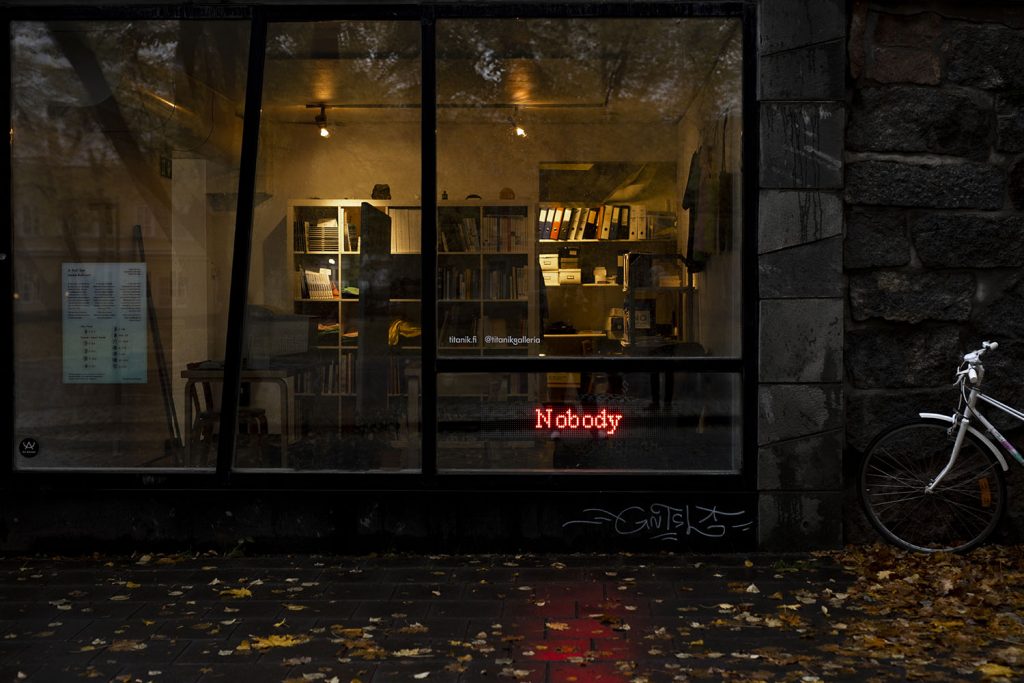
“You are gone. I wonder what kind of animal has moved you. A human?
The ground is still frozen. Undiggable. I imagine them putting you (*your body) in the bio waste bin.“
***
“Perhaps your family had been here for generations?
Perhaps the island was a kind of hell. Or limbo. From which you were not able to leave.
Perhaps you positioned yourself there at the bird feeder in surrender.”⠀
***
“Exit, Gabriella.
Gliding out of the frame without even pausing.
Dead to me.
Enter, Helen.
Always at dusk.
The focus of my attention, if not my desire.“

A bird is dead, a pheasant. That is the underlying condition of the whole text. It’s reminiscent of the “woman in the fridge” trope, common in crime TV. A quirky detective arrives in a small town where the body of a local girl has been found dead. The protagonist, and with them, the viewer gets to know the community to which they don’t quite belong, and by their wit and despite, or perhaps because of that non-belonging they reinstate the familial order of the town. Bullivant’s woman in the fridge is a pheasant, and the townspeople are mostly nonhuman. The trope is implicitly misogynistic. The body of the girl is given value as a lost object with no agency. Replacing the dead human with a bird displaces this narrative. It is an ‘other’ so far removed from us that we would rarely pay attention to losing one. Bullivant stops and wonders about the life and death of a specific fowl individual, which wedges a space to displace our anthropocentric viewpoint. On the other hand, one wonders if there isn’t an element of anthropomorphising at play in the pheasant’s imagined relations.
Whose life is worth grieving, what entities can we relate with, and to what end do the questions of the text aspire. A friend’s dog kills two mice, and the narrator doesn’t feel sad for them. They’re even a little proud. Do they feel sad for the pheasant because there was recognition? But didn’t they identify with the mice as mice, as well? They assume they had seen the pheasant alive the previous summer. The loss of the bird only becomes a loss because the narrator sees the body. We wouldn’t expect to see an individual bird again, unless we were specifically looking.
Bullivant imagines the dead pheasant left a partner behind. The Spice Girls anthem ‘2 Become 1’ is imbued with a new meaning when romantic merging morphs into loss—when 100 percent becomes 50 percent. Pheasants don’t form pairs, they breed in small groups but perhaps they were the only two on the island. The loss Bullivant imagines the remaining pheasant going through merges with their own experience of loss, which is rooted in their nostalgic imagination of the pheasant’s life.
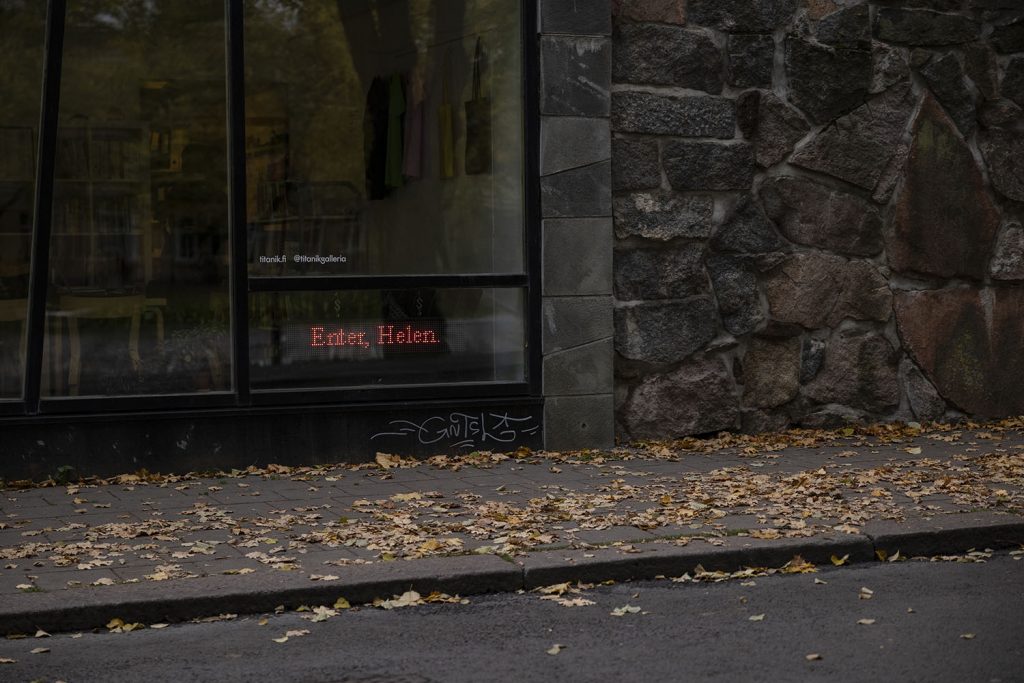
The ground is frozen, which forbids burial, so Bullivant wonders if the bird has been thrown into the bio waste bin. Of everyday human waste, fingernail clippings are allowed in the compost but not hair, which the narrator relates to: “same (about my orifices)”. Later they cut their own nails, which feels like a silent and perhaps unintentional ritual of material connection with the pheasant—parts of their bodies uniting at the compostable. At the time of the pheasant’s death, one of the YouTube yoga teachers Bullivant follows, also dies.
The narrator seems to seek connection to fill the gap left by the pheasant and the teacher: there is a “Gabriella” that comes and goes. She could be a person, or the cruise ship of that name that regularly passes Suomenlinna. There’s a “Helen”, possibly another person, or the Helsinki energy company and its power plant, visible on the ferry ride to the island. Seasons change, both in the text and on the riverbank next to the gallery, where the reader stands, exposed to the weather. Death moves further into the past and possible futures arise.
Most of the characters are post-human. Pheasants were planted in the Finnish ecosystem only a hundred years ago for hunting purposes. The industrial beings Gabriella and Helen, both still burning fossil fuels, are parts of the processes that are responsible for the mass extinction of life today, if not the death of this individual pheasant. They are also relevant parts of society, like the suspected or actual murderer so often seems to be.
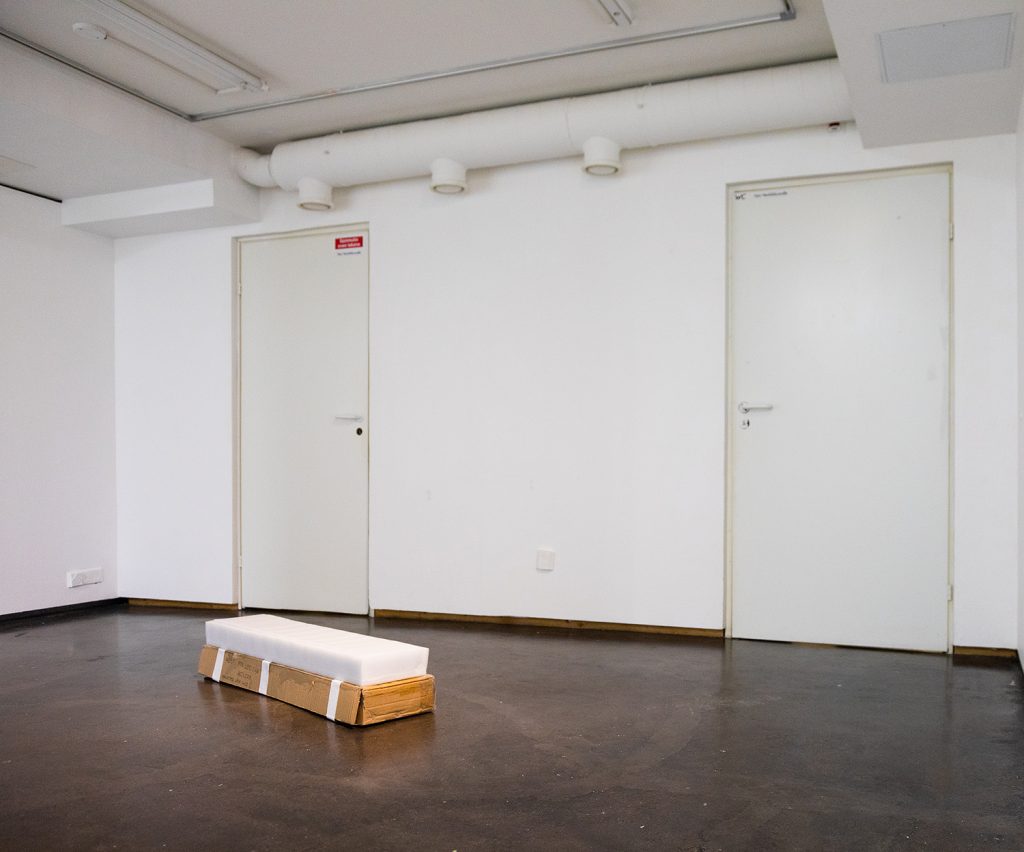
The narrator inherits a dying plant in the autumn, destined to bring it back to life, even though it’s hibernation season. They only have a couple of months before they go west, like the Pet Shop Boys and unlike most migratory birds.
In the darkest pit of winter, there is a heavy-duty, rectangular cardboard box on the floor of the backspace of Titanik, where the final exhibition of Weathering is running. The box contains the LED screen, which now, turned off, is only the dead carcass of the artwork it displayed during the year. It holds the entire potential of the past twelve months and all the views and readings it may have gathered from the street. The end holds the beginning and the beginning holds the end.**
